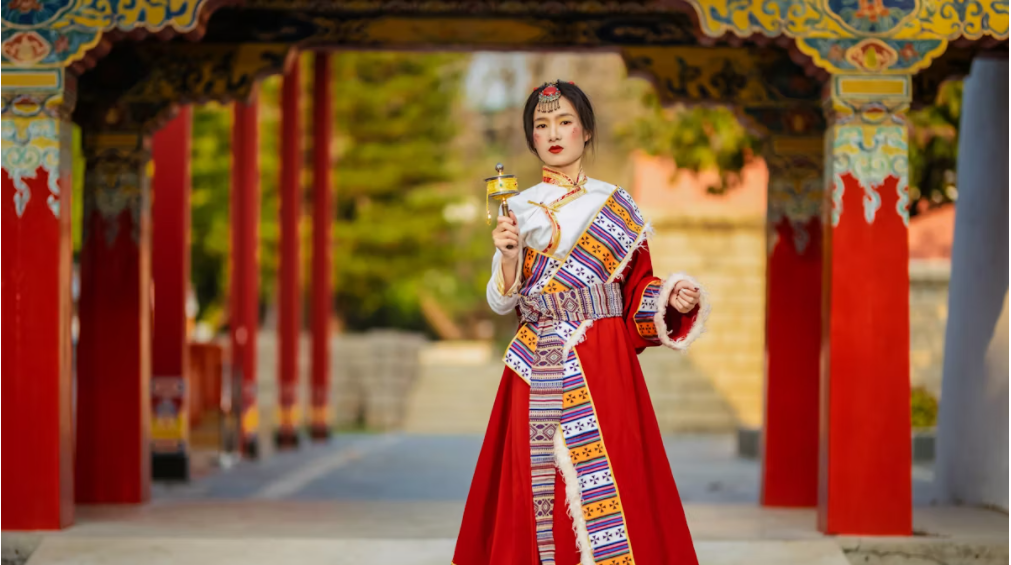Unveiling the Legacy
The History of Hanfu Dress
The history of hanfu dress is a captivating journey through the annals of Chinese traditional clothing. Dating back to ancient times, hanfu has been an integral part of Chinese culture, reflecting the rich heritage and customs of the civilization.
- From its ancient origins to the influence of different dynasties, the evolution of hanfu dress mirrors the dynamic history of China.
- The materials traditionally used in hanfu dress and the variety of designs showcase its deep-rooted connection to Chinese historical clothing.

The History of Hanfu Dress
Ancient Origins
The origins of hanfu dress can be traced back to the early periods of Chinese civilization, with its roots deeply embedded in the ancient traditions and customs of the region. Initially, hanfu garments were simple and practical, reflecting the lifestyle of the people during that era. Over time, these garments evolved in style and form, influenced by the changing socio-cultural landscape of China.
Different dynasties played a significant role in shaping the evolution of hanfu dress, each leaving a distinct imprint on its styles and designs. The Han Dynasty, for instance, contributed to the refinement and standardization of hanfu, setting a precedent for subsequent dynasties to follow. The Tang Dynasty introduced new elements and influences from Central Asia, leading to a diverse range of styles within hanfu dress.
Materials and Designs
Traditional materials such as silk, cotton, and hemp were commonly used in crafting hanfu dress, emphasizing comfort, elegance, and functionality. These materials varied based on regional influences, with different parts of China favoring specific fabrics and designs unique to their cultural heritage. The intricate embroidery, vibrant colors, and flowing silhouettes are characteristic features that distinguish hanfu dress as an iconic representation of traditional Chinese attire.
The designs of hanfu dress also reflected regional diversity with distinctive elements inspired by nature, folklore, and historical symbolism. Each design bore significance related to cultural practices or beliefs prevalent in different parts of China.
Symbolism and Styles
Symbolic Meanings
The hanfu styles are steeped in symbolic meanings, with each element carrying cultural significance and historical narratives. The attire’s intricate details, such as the choice of fabric, embroidery motifs, and garment accessories, hold deep symbolism within traditional Chinese culture. For example, the use of specific colors in hanfu dress symbolizes virtues such as purity, prosperity, and loyalty. Additionally, the patterns and motifs adorning the garments often depict auspicious symbols or legendary tales that have been passed down through generations.
Furthermore, specific styles within hanfu dress are associated with particular occasions or societal roles. For instance, ceremonial robes convey authority and dignity, while everyday attire reflects modesty and practicality. Understanding the symbolic meanings behind these elements provides insight into the values and beliefs cherished by ancient Chinese society.
Variety of Styles
The diversity of hanfu styles encompasses a wide array of designs that reflect the rich tapestry of traditional Chinese clothing styles. From the graceful flowing lines of Han-style robes to the elaborate layered ensembles of Tang-style garments, each style embodies a unique historical narrative. Regional variations further enrich this diversity by incorporating local customs and aesthetics into hanfu dress, showcasing the dynamic evolution of historical Chinese fashion across different provinces.
- Han-style robes
- Tang-style garments
- Regional variations reflecting diverse cultural influences
Cultural Impact and Revival
Contemporary Revival
The resurgence of hanfu dress in modern culture signifies a renewed appreciation for traditional Chinese attire. In recent years, there has been a growing interest in reviving the elegance and grace of historical Chinese fashion, with hanfu at the forefront of this revival. This resurgence extends beyond mere sartorial choices, influencing various facets of contemporary fashion and pop culture.
The influence of hanfu dress on contemporary fashion is evident in its integration into mainstream clothing designs, runway showcases, and international fashion events. Designers and fashion enthusiasts alike are drawing inspiration from the timeless allure of hanfu, infusing elements of its aesthetic into modern clothing collections. Moreover, the widespread popularity of hanfu dress has permeated pop culture, leading to its portrayal in films, television series, and social media platforms as a symbol of cultural pride and artistic expression.
Cultural Significance
The cultural impact and relevance of hanfu dress today underscore its enduring legacy as an emblem of Chinese tradition. As a form of traditional Chinese attire, hanfu serves as a poignant reminder of the nation’s rich heritage and historical identity. Its significance transcends mere clothing; it embodies the collective memory and values cherished by generations past.
In comparison with other traditional clothing from around the world, hanfu dress stands out for its intricate craftsmanship, profound symbolism, and deep-rooted connection to Chinese customs and traditions. The revival of hanfu not only preserves an ancient sartorial legacy but also fosters cross-cultural appreciation and understanding.
Legacy of Hanfu Dress
The Timeless Influence
The legacy of hanfu dress endures as a testament to the rich tapestry of Chinese historical clothing. Its significance extends beyond mere attire; it encapsulates the essence of traditional Chinese culture and customs. The profound impact of hanfu dress on contemporary fashion and cultural expression underscores its timeless relevance. As a symbol of heritage, it continues to evoke admiration and fascination, serving as a bridge between the past and the present. The enduring legacy of hanfu dress serves as a poignant reminder of China’s historical identity and its enduring contribution to the global sartorial landscape.






